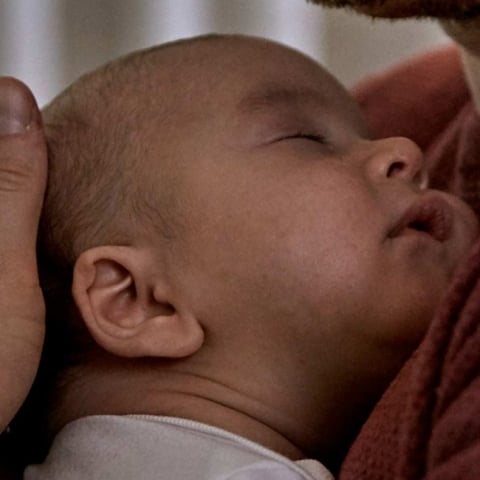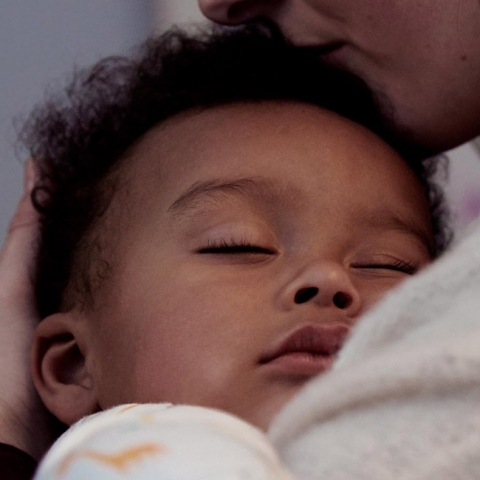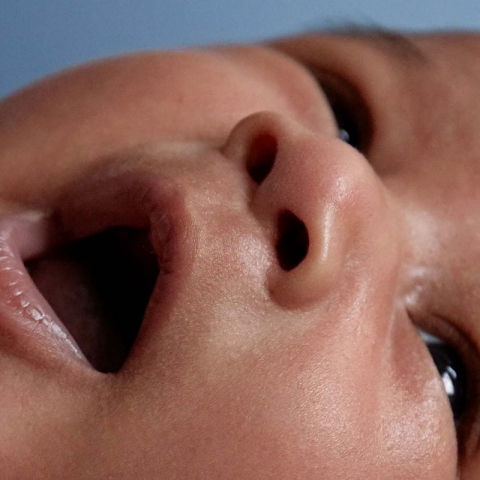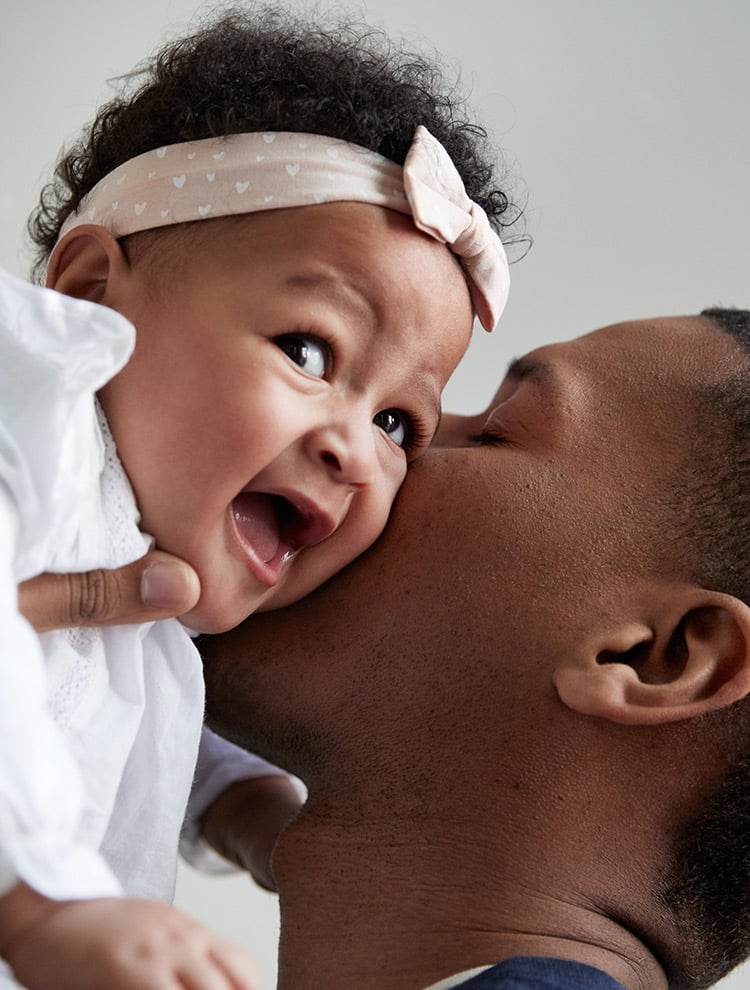Cross-Cultural Differences in Sleep
A leading sleep expert discusses the effects of cultural differences on a baby’s bedtime.
Thank you very much for having me here today. And I’m really excited to talk about this topic, because it’s become one of my most exciting research studies that I have been involved in. So I’ll be just talking about cross-cultural differences in sleep in young children and their mothers. I’m Dr. Jodi Mindell. I am a pediatric sleep psychologist at the Children’s Hospital of Philadelphia, and also a professor of psychology at St. Joseph’s University.
In our Sleep Center, at the Children’s Hospital of Philadelphia, we see children of all ages, from birth through 18, even 20 year olds, and we see every type of sleep problem. But I’m very, very interested in sleep in young children and I’ll be talking specifically about primarily zero to three-year-olds. Just to let you know, that most of this research and my being here today is supported by Johnson’s® Baby, a division of Kenvue Inc. and I really appreciate their support of pediatric sleep.
So just a little bit of background is that surprisingly there have been very few studies looking at sleep cross-culturally around the world…about how much sleep parents are getting, adults are getting, young children are getting. We really knew very little. However, there have been studies looking at sleep, for example, in China, in the United States, in Australia, but no one has ever done it using the same measure, using the same methodology. And so we’ve been very fortunate in being able to do that.
I’m going to be presenting data on sleep in almost 45,000 families. We’ve done it in different regions of the world. So first of all, in predominantly Asian countries, which are the blue stars, that’s like China, Japan, Hong Kong, all the in predominantly Asian countries. The green stars are the in predominantly Caucasian countries and regions. So that is US, UK, Australia, New Zealand, and Canada. We also just very recently collected data in Brazil, which is in the yellow star, and lastly, is we also have some data from the Middle East. The Middle East is the orange star, and that data was just collected in the last six months. So this is hot off the presses.
So the methodology we use is exact same everywhere around the world. Okay? The measures we use were the Brief Infant Sleep Questionnaire. It is well validated, it’s been published in the Journal of Pediatrics, we know that it is very accurate in terms of measuring sleep. And for parents, we use the Pittsburgh Sleep Quality Index. That the – it’s called the PSQI, it is a worldwide measure, translated into multiple languages and is used in almost every study looking at sleep in adults.
This was an internet base study. So what we did was we collected data in every country using just about the same methodology through a website called BabyCenter®. The questionnaire was done in the language of that country or region. It was translated, it was back translated to ensure that it was the same everywhere. So what I’m going to do is I’m just going to show you some few results, but it will really capture the differences around the world.
So first of all, bedtime. Okay, a reminder that blue is predominantly Asian, green is predominantly Caucasian, yellow is Brazil, and orange is Middle East. So this is just bedtime. What time does your young child go to bed at night? And you can see it ranges from as early as 7:30 at night in New Zealand, all the way as late as 10:45 in the Middle East. So these are huge differences over three hours in what time children go to bed. And you can see the predominantly Caucasian countries are, as a whole, going to bed much earlier than the predominantly Asian countries, with the Middle East way out there.
How much sleep does your child get at night? Again, huge range − from in Taiwan, a little over nine hours, and in New Zealand, about 10 and a half. And as I tell people, if you want to sleep, you need to live in New Zealand or Australia. They are the sleepers of the world. In Brazil and Middle East, also, you can see there’s very little nighttime sleep. What’s interesting is that wake times are just about the same everywhere as well as daytime sleep. So when you put it together, and you look at total sleep times, they’re not catching up on sleep during the day or sleeping in the morning, is that it really falls again, into that nighttime sleep, is that bedtime seems to be driving it. So in Japan, overall, young children, zero to three-year-olds are getting about 11 and a half hours of sleep. And in New Zealand, it’s a little over 13 hours of sleep. It’s incredible, the differences.
In terms of co-sleeping, so we also looked at sleep behaviors. And what we found is if you look at whether or not a child sleeps in the parents’ room, dramatic differences between across regions of the world. So in predominantly Caucasian countries like Canada, only 15% of children are sleeping in their parents’ room. And if you look at Thailand, 94% are sleeping in the parents’ room. When you could see Brazil, and the Middle East are sort of in the middle. However, if you look at “sleeps in the parents’ bed”, you get this much more linear progression without these dramatic differences. So United Kingdom, it’s 5% of children, young children, sleep in their parents’ bed, and in Vietnam it’s 83% - just about every child. And you can see, in the middle, if you look at places like Korea, Hong Kong, Japan, the more industrialized Asian countries, you can see them falling in the middle between the predominantly Caucasian, and the predominantly Asian.
We also looked at sleep problems. So all we did was ask the question, “Do you think your child has a sleep problem?” So this is not based on a definition that we had, but a parental definition. And again, huge differences. Vietnam as low as 10%, and in China, as high as 76%. In the three Chinese based countries, Hong Kong, Taiwan and China, you can see that about three out of four parents report that they believe their child has a sleep problem. Here, in Canada, it’s right around 30%, US around 25%, Middle East, it’s about 40% of parents report they think their child has a sleep problem.
So moving on to mom sleep. So we also asked about how mothers are sleeping and here we’re looking at zero to six-year-olds, so it’s not just zero to three, but it’s sort of the larger group of looking at infants, toddlers, and preschoolers. Now again, bedtime, you see these major differences around the world. This has fewer countries’ in it, but it will, again, give you the flavor of what sleep looks like. So Thailand, they’re going to bed at around 10:15 at night. And in Hong Kong, they’re going to bed at almost midnight. That’s average bedtimes across moms. And again, you can see some of that predominantly Caucasian, predominantly Asian differences in the data.
If you look at total sleep time, I think this is really fascinating. Okay? In total sleep time, if you look at this group overall, so if you look at from Singapore all the way up to Hong Kong, there’s almost no differences in how much sleep moms are getting. However, if you look at Korea and China, they’re getting much more sleep. And that’s because on these countries, wake time in Korea and China, is much later for moms than it is in all the other countries. And so they’re really sleeping in, even though they’re going to bed quite late. So again, from six and a half hours, all the way up to over 8 hours.
We also look at short sleep. In the sleep community, short sleep is defined as less than or six – less than or equal to six hours of sleep, which probably many of you are getting, however, if you look at the moms around the world, in China, 9% only are getting that, because remember, they had a very high total sleep time. They’re sleeping-in in the morning. But in Singapore, it’s up to 40% of moms are getting less than or equal to six hours of sleep.
Another thing we look at is poor sleep. Poor sleep fortunately is well-defined. There is a cut off score. So this is not a mom reporting “I had poor sleep” – this is based on a validated measure. We group them into good sleep and poor sleep. And it’s very, very high in moms. So, in China, 43% of moms meet the definition of having poor sleep. And in Japan, it’s up to 78%. Three out of four moms are getting poor sleep in Japan.
We also have looked at what’s the impact of a child’s sleep on mom. So we asked her the questions. For example, the first one was, “does your child’s sleep negatively impact your sleep and if you look at moms of zero to three-year-olds, almost half of them report so, and the three to six-year-olds, one out of three moms report their child’s sleep impacts theirs. We also asked them, “does your child’s sleep impact your daytime functioning?” And again, one out of three moms of zero to three-year-olds report that their child’s sleep negatively impacts them the next day, and one out of four moms of three to six-year-olds. So again, it really shows you the picture that not only are we looking to improve children’s sleep, but consequently, we’re going to improve mom’s sleep and family’s sleep.
So in conclusion, we see these dramatic cross-cultural differences. So first of all there’s just these incredible, significant differences across countries and regions. Across the regions, later bedtimes, Middle East are going to bed at the latest at night, in infants and toddlers, followed by predominantly Asian countries and regions and predominantly Caucasian. Again, the same pattern for less total sleep. There are also more sleep problems reported in predominantly Asian countries and regions than in predominantly Caucasian. There’s also very high rates of reported sleep problems. Brazil, one out of four, all the way up to almost one out of two in predominantly Asian countries and regions. So if you’re asking your patients about it, which I encourage all of you to do, you’ll see about 50% are going to report that their child has a sleep problem, and mothers also have very high rates of poor sleep − 55% in moms and also they’re short sleepers. One out of four moms are short sleepers.
So in conclusion, what I really want is, I want pediatricians and primary care providers to ask every family about sleep, ask about the child’s sleep, and also ask about the parent’s sleep. And really consider cross cultural differences when you’re looking at whether or not this family and this child meets the norms or not.
Thank you very, very much.
What's New?
The world of science is always evolving. That’s why JOHNSON'S® is devoted to providing the latest and greatest in research, innovation, and technology.






By registering, you agree to receive additional transactional, marketing/promotional and sample material from the Johnson's Baby Professional website. Your personal information will be used to fulfill your request for samples and/or patient education materials. Your information will be shared only with JNTL Consumer Health (Philippines) Inc., its affiliates, and any third parties working on their behalf to fulfill your request, and will be governed by our site's Privacy Policy.